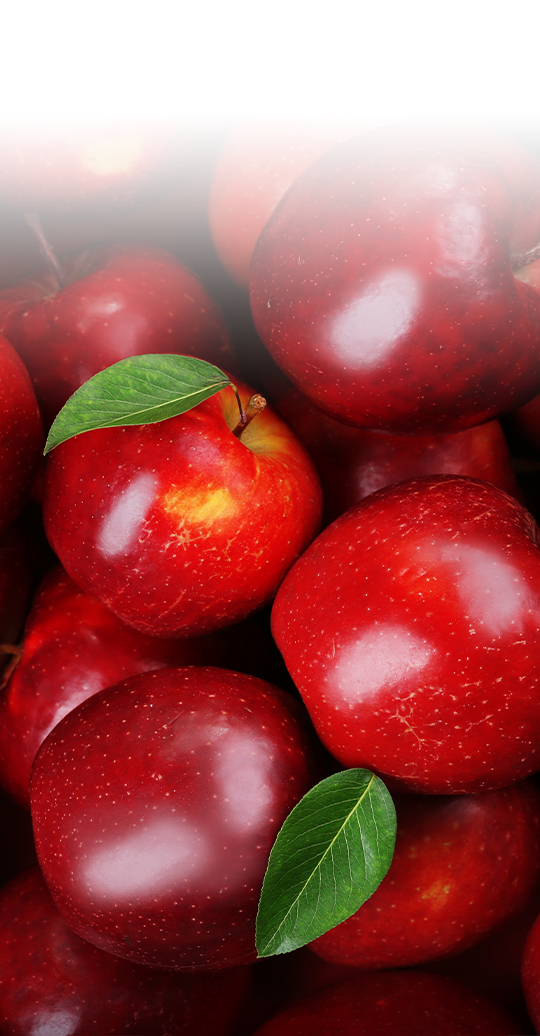DoD COMMODITY PROCESSOR
Richland Hills Farms is a DoD Commodity Processor
Richland Hills Farms is proud to be part of the United States Department of Agriculture (USDA) Department of Defense (DOD) Fresh Fruit and Vegetable Program. This program allows schools to purchase Richland Hills Farms sliced apples with USDA Foods entitlement dollars.
WHAT IS A COMMODITY PROCESSOR?
A commercial processor that generates goods from commodity raw materials, such as apples and many other items.
WHAT ARE USDA COMMODITIES?
A commodity is a basic good used in commerce that is interchangeable with other goods of the same type. These are most often used as raw materials in the production of other items. Commodities are found in the majority of goods that end up in the hands of US consumers. Everyday goods like clothing and tires, a variety of beverage commodities such as coffee beans, tea, and orange juice, and many various food items from ground beef to apples and much more in between.
WHAT ARE USDA APPROVED FOODS?
USDA foods are food items approved by the USDA for purchase in various available USDA programs. USDA approved foods have met or exceeded USDA standard. Fruit and Vegetable growers and processors have passed GHP and/or GAP audits conducted by the USDA. From field to plate, all produce items have been held to quality and food safety regulations set forth by the USDA to ensure the highest quality finished product.
Providing Healthy Food in Schools
The United States Department of Agriculture Department of Defense Fresh Fruit and Vegetable Program (USDA DoD Fresh) allows schools to use USDA Foods entitlement dollars to buy fresh produce. The program is operated by the Defense Logistics Agency (DLA) at the Department of Defense. Working with USDA DoD Fresh, the USDA is able to offer school foodservice a wider variety of fresh produce than would usually be available through the USDA Foods program.
USDA DoD Fresh is currently available to schools across 48 states, the District of Columbia, Guam, Puerto Rico, and the Virgin Islands. The program is an optional program and participation is not required. If you decide to participate, you will set aside a portion of your USDA Foods entitlement dollars. Your school corporation can commit as much of your entitlement to the program as you choose. USDA will handle all bills up to the amount of the entitlement you set aside. This is not the same as the Fresh Fruit and Vegetable Program (FFVP).
USDA DoD Fresh program leverages DoD’s procurement system to provide a variety of nutritious fresh fruits and vegetables grown in the US to schools. Schools receive two types of support from the USDA. The majority of the support is provided in the form of cash reimbursement for the meals served. The second form of support is the ability to order foods that USDA purchases (“USDA Foods”) which can make up about 15-20% of the value of the food served in the National School Lunch Program. USDA DoD Fresh is one option that schools can use to spend their entitlement.
DoD program distributors are assigned in each state by the DoD. Warehouse agencies order selected seasonal DoD produce through the allocation process. Agencies are charged a service and handling fee for every case of produce delivered through the State Distribution Center. Private Co-ops and direct ship agencies order domestically grown fresh fruits and vegetables directly from the DoD as needed. A private distributor delivers DoD produce to each agency. Schools who commit USDA Foods entitlement dollars to the program order and receive produce directly from the DoD assigned distributor as needed
The USDA Foods in Schools program supports domestic nutrition programs and American agricultural producers through purchases of 100% American grown and produced foods for use by schools and institutions. USDA Foods are available to child nutrition programs in three ways: direct delivery, USDA Foods Processing, and the USDA DoD Fresh Fruit and Vegetable Program.
USDA Foods Processing allows State Distributing Agencies and Eligible Recipient Agencies, such as school districts, to contract with commercial food processors to convert raw bulk USDA Foods into more convenient, ready-to-use end products. USDA Foods Processing is governed by regulations contained in the Code of Federal Regulations at Title 7, Part 250, Subpart C.
States agencies work with schools to manage how much USDA Foods entitlement to allocate to USDA DoD Fresh and to help ensure the schools entitlement is fully utilized.

DOD Foods in Schools
The DOD Fresh Produce program provides many advantages for our K-12 segment. These include dependable deliveries, better buying power, a greater emphasis on high quality fruits and vegetables, a larger selection of various produce items including pre-cut and locally grown. The program website tracks each account’s available funds and makes ordering easy. USDA DoD Fresh vendors update weekly and schools can receive deliveries from the available catalog as often as every week, making orders dependable, fresh, and responsive to market changes. States and schools place orders directly with DSCP for a vast selection of American- grown fresh products like sliced apples. States and schools that want to purchase local foods through USDA DoD Fresh should start by looking for products already marked with the state or origin in the FFAVORS catalog. States and schools can also contact their USDA DoD Fresh produce vendor to find out which local products the vendor expects to carry throughout the year, or to make their interest in local produce known to the USDA DoD Fresh vendor.
Making sure a variety of fresh fruits and vegetables are available to all schools is the focus of the DOD. USDA DoD Fresh offers many different types and varieties of produce, all grown in the United States. School districts can choose between different package sizes, whole or pre-cut options, and can select locally grown produce when in season. Utilizing the USDA DoD emphasis on local farming. The USDA supports American agricultural producers through purchases of 100% American grown and produced foods for use by schools and institutions participating in the National School Lunch Program (NSLP), among others. USDA DoD Fresh is another choice in a request-driven system to help States and school districts manage and utilize USDA Foods entitlement more effectively.
DoD program maintains high quality standards through Produce Quality Audits, requires processors to follow Good Agricultural Practices (GAP) and Good Handling Practices (GHP), and requires that pre-cut apples are sourced from approved domestic suppliers, such as Sunset Orchard.
Kids eat more fruits and vegetables, when more fruits and vegetables are offered throughout their day. A recent Harvard study reported that, under the updated standards for school meals, kids are now eating 16 percent more vegetables and 23 percent more fruit at lunch. The DoD program helps schools meet meal pattern requirements in ways that boost student acceptance of various fruit and vegetable offerings that otherwise may not have been an option without the DoD program.
Allowing schools access and availability of a wide variety of fresh fruits and vegetables guarantees that there is something for everyone. It also gives schools the opportunity to introduce kids to different types of fruits and vegetables that they may not have had the opportunity to try before. Fresh fruits and vegetables are an important part of a healthy diet. They contain essential vitamins, minerals, fiber and other nutrients that are essential for good health. In fact, research has shown that a healthy diet rich in fruits and vegetables may reduce the risk of cancer and other chronic diseases. The health benefits of eating fresh fruits and vegetables far outweigh the reasons to consume them in any other form such as juices or canned.
7 Benefits of Eating Fresh Fruits & Vegetables

Fiber
Fresh produce can add up to 10-20 times more fiber in your diet without really trying

Natural Nutrients
Essential nutrients provided by fruits and vegetables are only available in their natural state, all other forms the nutrients are added

Healthy Choice
The real thing has a lot less sugar and salt than equivalent type products

Energy
You will experience more energy, and you will get full faster

Fruit/Vegetable Servings
Whole produce items are a better way to get your required servings of fruit and vegetables. They will not spike your blood sugar nearly as high as you would with fruit juice or vegetable juice

Smart Snacking
Less sodium, fat, and sugar than other processed snack options

Dental Health
Children will get about 10x less cavities, if they only consume fresh fruit and vegetables
Easy Ordering and Funds Tracking
Schools place orders via the web-based Fresh Fruit and Vegetable Order/Receipt System (FFAVORS). The prices listed in the FFAVORS catalog reflect the prices that schools will be billed for the product. FFAVORS tracks schools’ entitlement fund balances and total order costs. DoD manages vendor payment and reconciliation.
The Defense Logistics Agency website provides background information about DoD and links to each vendor’s contract. The Food and Nutrition Service website provides contact information for farm to school personnel in your area, and a helpful history of the DoD Fresh program
